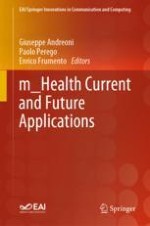2019 | OriginalPaper | Chapter
4. Cybersecurity and the Evolutions of Healthcare: Challenges and Threats Behind Its Evolution
Author : Enrico Frumento
Published in: m_Health Current and Future Applications
Publisher: Springer International Publishing
Activate our intelligent search to find suitable subject content or patents.
Select sections of text to find matching patents with Artificial Intelligence. powered by
Select sections of text to find additional relevant content using AI-assisted search. powered by
